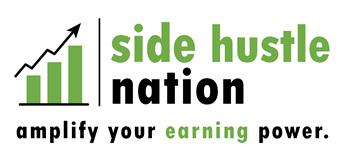
Let’s talk about 9 rules to scaling up your side hustle.
We’ve got a lot of episodes on the zero-to-one part of the equation, but now it’s time to go from one to two to ten.
Joining me is Justin Williams, a serial entrepreneur who’s done it all—from flipping over a hundred houses a year to scaling and selling an online education business.
Now, he’s the brains behind Millionaire University and its accompanying podcast.
Sponsors
- Shopify — Sign up for a $1 per month trial!
- Indeed – Start hiring NOW with a $75 sponsored job credit to upgrade your job post!
Round 1: 9 Rules to Scale
1. Intent
Start with the vision and ask yourself, “How can we do more of this?” Our brain is an incredibly powerful tool. If you give it a problem to solve, it’ll usually go to work doing it.
As Kristin Armstrong, one of the best cyclists in the world, said, “We either live with intention or exist by default.”
Some people don’t scale their business or side hustle because it’s not their intention to do so.
Many people go through life without any intention to change things. They are reactive to what’s happening around them and don’t reach their goals. So start with a vision. Know where you want to go and have the intention to grow and scale.
2. Eliminate
Write down everything you’re doing in your business and life—then start getting rid of anything you can.
It’s nice to have multiple streams of income, but if you’re spending a lot of time on things that aren’t getting great results, you might want to let those things go.
You might be doing podcasts, posting on all social media, collecting emails, and even blogging. It might be fun for a week, but then it gets exhausting and overwhelming. Ask yourself, “What is the one thing that I want to focus on?”
As Peter Drucker famously said, “There’s nothing so useless as doing efficiently that which shouldn’t be done at all.”
Decide what you’re best at and what you enjoy the most, then put everything else on the back burner. You can always go back to it later.
3. Automate
Take that same list and ask yourself, “What tasks can be automated?”
In the online world, you can automate things like email responses, social media posts, or even content creation to some extent.
Tools like Zapier or Asana can be game-changers, allowing you to create automated workflows between different apps.
It might only have taken a couple of seconds before, but now you don’t have to think about it at all.
4. Delegate
Delegation and automation go hand-in-hand. Once you’ve identified what can be eliminated and automated, it’s time to look at delegation.
Ask yourself, “How can I delegate the remaining tasks on this list?” The goal is to free up your time to focus on high-value activities that drive your business forward.
Start with the tasks that take up most of your time and seem easiest to hand off to someone else. You can hire an assistant and train them on the exact criteria you want for specific tasks.
Remember, delegation isn’t about offloading work you don’t want to do. It’s about strategically assigning tasks to free up your time for activities that truly require your expertise and vision.
5. De-Risk
The main thing that keeps people from growing or scaling their businesses is fear of risk—fear of “What am I going to lose?”
To overcome this, create a de-risking plan.
For Justin, during a challenging period in real estate, he started with wholesaling, which involved minimal risk.
“We would put houses under contract… then we would sell the rights to that contract. We never actually bought the house. So we weren’t risking any money.”
When they decided to flip houses using investor’s money, Justin was initially gripped by fear. But by overcoming this fear through successful deals, they eventually shifted to rental properties.
This allowed them to create a system that mitigated risk by having both a plan A (flipping) and a plan B (rentals).
In today’s rapidly changing business landscape, de-risking might involve diversifying traffic sources, building an email list, or developing your own product to compete in an AI-first world.
6. $60/hour rule or 3x rule – Nail then Scale
This rule is about understanding the economics of your business and ensuring you have enough margin to scale.
If you can make at least $60 per hour in a service business, you have room for growth. The idea is to price your service at $60 per hour, then hire labor at $20-25 per hour. This leaves enough margin for overhead and profit.
Alternatively, think of it as the 3x rule: your final price should be about triple your labor cost.
This applies to service businesses like cleaning, painting, or car detailing. Once you’ve nailed your service and pricing, you can scale by hiring more workers and focusing on getting new clients.
In the online world, if a piece of content might earn $1000 over a year, paying someone $300 to create it could be worthwhile.
7. The Marketing Flywheel
Also known as the self-liquidation offer or the breakeven funnel, it is about “acquiring customers for free.” The goal is to make your customer acquisition cost equal to or less than what you earn from each new customer.
Justin says that their podcast costs $0.6 to $0.8 cents to acquire a new listener and makes about the same per listener. This means they’re at the breakeven point.
He mentions a platform called PodRoll, which allows podcasters to do “feed drops” – where another podcaster can put their episode in your feed. While it might seem expensive to pay a high CPM for this, it’s valuable because listeners are actually experiencing your full show, not just hearing a short ad.
The goal is to keep improving these numbers, potentially making $0.10 to $0.15 cents per listener in the future. You create a “money-making machine” where every dollar invested earns more as you optimize this process.
8. Velocity of Money
Most people don’t understand this concept, and we don’t learn it in school. In fact, a study found that two-thirds of American adults can’t pass a basic test of financial literacy.
The velocity of money refers to how quickly you can turn your investment into profit and reinvest.
For example, if you’re flipping houses and making 15-20% profit in 4 months, you could potentially do this three times a year, resulting in a 45-60% annual return.
Understanding this concept can help you make better investment decisions and scale your business more effectively.
9. The Compound Effect
Also known as the aggregation of marginal gains, this concept was popularized by the British cycling team and later in the book Atomic Habits by James Clear.
The idea is to focus on making 1% improvements in every aspect of your business each day.
While these small changes might not seem significant on their own, over time they compound to create massive improvements.
Constantly look for ways to improve every aspect of your business, no matter how small. Test new ideas, keep what works, and keep trying to improve the things that aren’t working.
Over time, these small, consistent improvements will lead to significant growth in your business.
Round 2: Donate A Business Idea
Justin suggests creating short, engaging audio tours (like a podcast) or history lessons—inspired by his experiences traveling in Europe. It aims to solve the problem of boring, overly long tours.
The concept involves 10-30 minute lessons/tours, potentially with ad breaks, focusing initially on history-rich locations like Italy.
The production would involve hiring historians/experts to write content, using professional voice actors (or AI voiceovers) for narration, and even using AI to generate content.
Distribution would involve working with podcast platforms for promotion. The idea is scalable, with the potential to expand to other subjects like science, and could be set up to run passively by outsourcing most of the work.
Round 3: The Triple Threat
Here are Justin’s top tips in the final round:
Marketing Tactic
Justin focuses on working with podcast players to promote their shows—such as Castbox, Player FM, PodRoll, and Audiencelift. He’s aware of the cost per player and can negotiate better deals when needed.
The goal is to generate cash, which will allow them to hire more people and keep the flywheel going. They’re holding off on launching their own program for now, but may consider affiliate marketing in the future.
Favorite Tool
Justin’s favorite tool is Google Calendar. He uses it as his “second brain,” inputting all ideas, thoughts, and to-dos. You can review it daily, either deleting tasks, automating them, delegating them, or moving them to a future date. This ensures you always know what to do and never wake up without a plan.
Book Recommendation
Procrastinate on Purpose by Rory Vaden. The book discusses the “focus funnel” concept, which includes eliminating, automating, delegating, and purposeful procrastination. It introduces the concept that focusing on activities that multiply or free up their time will result in the highest ROTI (Return on Time Invested).
Justin’s #1 Tip for Side Hustle Nation
“Take action and use leverage.”
Episode Links
- millionaireuniversity.com
- Zapier
- Asana
- PodRoll
- Castbox
- Player FM
- Audiencelift
- Castbox, Player FM, PodRoll, and Audiencelift
- FINRA Foundation National Financial Capability Study (NFCS)
- “Atomic Habits” by James Clear.
Serious About Making Extra Money?
- Start Your Free $500 Challenge. My free 5-day email course shows you how to add $500 to your bottom line.
- Join the free Side Hustle Nation Community. The free Facebook group is the best place to connect with other side hustlers and get your questions answered.
- Download The Side Hustle Show. My free podcast shares how to make extra money with actionable weekly episodes.












